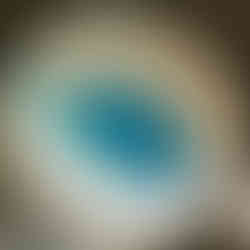Green without indigo, using logwood and weld
- Suzanne Dekel
- Mar 3, 2020
- 3 min read
Updated: Jan 13, 2021
I love going to the museum and looking at the different gowns in the portraits and how they must have dyed them.

Remember this famous painting by Jan Van Eyck? Look at that amazing green. (Just a fun fact; the lady looks pregnant but probably is just holding a whole lot of fabric in the front.) This colour would have been the result of using compound colours of Indigo and a yellow, but not everybody wants to keep an indigo vat, or maybe you have not started one yet.
Berthollet uses the most beautiful names to describe the different greens; Verd Canard, Parrot-Green, Verd Naissant, all done with indigo as a base.
He writes in his book 'Elements of the Art of Dyeing':
Many different plants are capable of affording green colours (...) but these colours have no permanence.
According to D'Ambourney (Encyclopaedia Brittanica) a permanent green may be obtained from the fermented juice of Buckthorn berries (rhamnus frangula), but that recipe calls for lead which I would be hesitant to use, and the last time I fermented cactus fruit for magenta pink I produced more fruit flies than pink.
I have gotten a gorgeous and lasting sea blue from green indigo (see this blog), but otherwise the lasting greens from plants will only be of two kinds;
Yellow dyed on textiles mordanted with ferrous sulphate, which will afford you shades of moss green and khaki greens.
Compound colours of yellow, overdyed with blue (or the other way around).
So indigo vat-less green it is today, inspired by the screen printing I did combining leftover logwood blue with weld print paste. I use the base recipe of logwood blue, in combination with weld. The copper sulphate is the crucial factor increasing the light fastness here.

Step 1: Weight your fabrics.
I took a mix of different scraps, including handwoven silk I had in the closet, a total of 100 grams. Always make a note of the weights, it's so easy to get confused. You can use a special dye sheet.
Step 2; mordanting in 4-5% copper sulphate (if you are using anhydrous, just use half).
Dissolve the copper in enough water to cover your fabrics, heat to around 60ºC for an hour and let it cool down in the pot. Stir regularly to make sure the fabric takes the mordant evenly. For this experiment I divided my fabric strips in half after mordanting so I could make two different batches.
Step 2; choose your yellow, I went for weld (reseda) because I love how potent it is, I suppose you could use onion skins, or oak bark or even pomegranate, all with slightly different results.
One pot I heated with 10%WOF, half of the fabric was 50 grams so 5 grams of weld powder.
The other pot was heated with 20%WOF, being 10 grams of weld powder.
Rinse the mordanted silk with regular tap water and dye each half in their designated weld bath for around 45 minutes at 60ºC, let cool
These were the results;
Step 3; The logwood bath.
Again two baths, one with 10%WOF logwood powder (5 grams) and one bath with 20% WOF logwood powder (10 grams). Both baths got an addition of 10 grams of soda ash.
Heat the logwood in plenty of water to 60ºC with the soda ash, and add the rinsed, weld dyed silks. At first the colour looks horrible and you will be sure something is going wrong, after about ten minutes of good stirring it starts to turn a gorgeous green.
Step 4. Take out the fabrics when you feel it is dark enough. The dried fabric will be at least two shades lighter than the wet. Rinse it in cold water with a bit of PH neutral detergent (I shamelessly use Ecover dishwashing liquid) and after that, rinse until all the soap is rinsed out.
From left to right; 20%WOF weld and logwood, 10% weld and logwood, 20% vs 10%.
The next step will be to eco print with these, but more about that in the next blog.
Let me know what you think in the comments.
Sign up for the newsletter below.




















